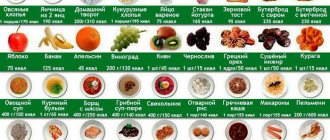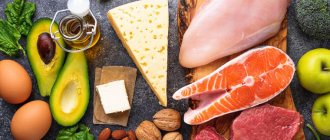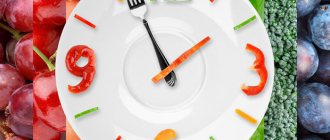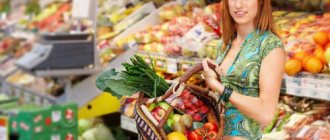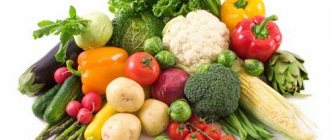In today's living conditions, more and more people are thinking about a healthy lifestyle and healthy eating. The raw food diet is a popular nutrition concept, the benefits of which have already been appreciated by many. It consists of completely avoiding the consumption of heat-processed foods. The raw food menu is a set of raw plant products. But this is not a meager and incomplete diet. Fresh vegetables, fruits, and herbs have a rich aroma and taste, and properly prepared dishes are nutritious and healthy.
Principles of raw food diet
The main law of natural nutrition is to eat at least four times a day. In this mode, the body receives the necessary charge of energy, metabolic processes are carried out, and hunger does not torment. Portions should be small. Along with main meals, snacks are allowed.
Rules for eating raw food:
- Do not wash down what you eat. You can drink it either 30 minutes before meals or 40 minutes after. Allowed drinks: pure water without carbon, herbal and berry infusions. It is allowed to replace one meal with a glass of freshly squeezed juice.
- Do not mix fatty foods with sweet ones. This combination causes fermentation in the intestines, so you should not eat nuts with dried fruits or honey, sweet fruits with avocados, etc.
- Combine sour fruits with fatty foods. So, orange harmonizes perfectly with nuts and avocado.
- Do not eat sour fruits at the same time as starchy ones. When interacting with acid, starch is poorly broken down, which can cause stomach pain, cramps and indigestion.
- Do not consume different fatty foods at the same time, for example, coconut with avocado or butter with nuts. Such combinations inhibit the absorption and digestion of food.
- Do not consume fresh fruits and dried fruits at the same time.
Authorized products:
- fresh fruits and vegetables, berries, herbs (supply the body with fiber);
- raw mushrooms grown in an environmentally friendly area;
- unroasted nuts: almonds, hazelnuts, peanuts, pistachios, walnuts (source of protein and minerals);
- sprouted seeds of wheat, buckwheat, lentils, sunflower;
- legumes: peas, lentils, green buckwheat;
- dried fruits not dried in ovens (replace fresh fruits in winter);
- seaweed (preferably dry seaweed, which is soaked before eating);
- honey;
- cold pressed vegetable oils.
It is strictly forbidden to include in the diet:
- any pickles and marinades;
- store-bought juices;
- alcoholic products;
- sparkling sweet water;
- coffee.
Types of raw food diet
As a separate direction, raw foodism began at the beginning of the 20th century, after the publication of the book “Principles of Dietary Treatment” by the famous writer Maximilian Bircher-Benner. It was he who managed to draw the line between vegetarianism and the consumption of raw foods. Thanks to this, over time, different versions of the modern direction were developed with certain principles:
- Classic or mixed. You can only eat vegetables, fruits, berries, nuts, grains and seeds. Occasionally, milk, fish, eggs and natural honey are allowed.
- Vegetarian. It is strictly forbidden to eat fish, meat and seafood. The proposed diet is based only on whole grain bread, seeds/grains, legumes, cottage cheese products and eggs.
- Vegan. Absolutely all animal products are prohibited, including milk, honey and eggs.
- Raw mono diet. Every day a certain product is consumed that corresponds to a raw food diet.
- Carnivorous. In this case, the consumption of products processed with heat and cold is not recommended. You can eat vegetable oils, meat and fish (raw), cereals.
- Fruitarianism. Naturally dried fruits and berries are a priority.
With this diet, you can drink herbal infusions, fresh juices, and green teas. Ideally, follow the principles of separate nutrition.
Transition to a raw food diet and nutritional habits in winter and summer
To start eating a raw food diet without harming your body, you should follow the recommendations of qualified doctors and experienced raw foodists.
Before refusing to eat thermally processed foods, you should consult your doctor: a raw food diet is contraindicated in some serious diseases.
To make the transition minimally stressful, at the initial stage you should give up meat and fish and switch to vegetarianism. When the body gets used to this regime, they switch to a full diet of raw vegetables and fruits.
It is important to monitor the water-salt balance. To do this, you should drink more than two liters of water per day. The daily food composition must be carefully selected so that the body has enough necessary vitamins, microelements, protein and carbohydrates (percentage ratio: 17 - fats, 73 - carbohydrates, 10 - proteins).
It is advisable to start a raw food diet in the summer and autumn, when fresh fruits, vegetables and herbs are in abundance, the products are not poisoned by pesticides and other substances, and are therefore healthy. But what to do in winter and spring, when you can no longer take vegetables directly from the garden?
- For the winter-spring period, stock up on vegetables as much as possible.
- Eat more fats contained in sunflower seeds, nuts, and various oils.
- Make some herbs (they can be stored in small bags in the freezer): parsley, dill, cilantro, lettuce. It can also be dried.
- Drink only warm drinks. The temperature should be about 40 °C. To maintain it, use a thermos.
- Eat more dried fruits because they have enough vitamins to replace fresh fruits.
- Use various spices as seasonings: cinnamon, cloves. They will keep you warm in the cold winter.
Competent transition to a raw food diet menu
You can’t switch to a raw food diet right away. Only a few can achieve the desired result immediately. On the contrary, there is a high probability of developing health problems, starting with weakness, aggression, bad mood and a constant feeling of discomfort. To make the transition to a raw food diet successful, you need to follow a few simple rules:
- Strict adherence to the drinking regime. We start and continue the day with simple drinking and mineral water (necessarily without gas). No drinks with sweets or other additives.
- Fractional meals - three main meals and several snacks. At first, it is allowed to cook dishes for breakfast by boiling. In the future we will also refuse them.
- When compiling a daily diet and filling it with fruit and vegetable components, we take only our favorite varieties and names. Following the principles of a raw food diet should be a joy, and not create discomfort while eating.
- If you need to sweeten a dish, experts recommend using raw cane sugar or a sweetener.
- We are trying to gradually eliminate meat, industrial sweets, pasta, macaroni, etc. from the diet.
- It is allowed to eat bread without yeast in it.
- For snacks between breakfasts, lunches and dinners, you can drink fresh juices, herbal decoctions and healthy tinctures.
- We replace various flavoring additives with alternatives - lemon, cranberry, tomato nectars.
It is advisable for beginning raw foodists to “sit” on proper nutrition for several weeks. During this period of time, the body will be cleansed of waste and toxins, and all stagnant water will leave. There will also be a quick adaptation to natural vitamins, minerals, and trace elements.
Creating a menu for the day
When compiling a daily diet, the following condition is met: different food groups are consumed separately. Eat sour fruits first. It is allowed to swap nuts with vegetables: such a replacement will not cause fermentation.
The order of products must be taken into account:
- fruits or starchy ones, and then nuts;
- fruits are starchy;
- sour - starchy;
- fruit, and then dried fruit.
Daily ratio of products: 45 percent fruits and berries, 35 percent vegetables, 10 percent starchy foods, 9 percent dried fruits, nuts and honey, 1 percent seasonings.
A sample daily menu includes a breakfast of fruit, a light lunch of salad and sprouted grains, and a dinner of legumes or root vegetables. Lunch and afternoon snacks consist of nuts or dried fruits, and for dessert, halva made from pistachios and sunflower seeds, prepared independently, is allowed.
Permitted and prohibited products
It is advisable to engage in a raw food diet from the age of 18. This diet is not recommended for older people. The diet is prepared in accordance with seasonal harvests; in winter they eat more dried fruits.
The menu includes the following products:
- fresh vegetables;
- fruits;
- fresh and frozen berries;
- herbs (spicy, salad);
- seeds of grains, legumes, soaked in water or sprouted;
- nuts (peanuts, pine nuts, hazelnuts, almonds);
- dried fruits;
- mushrooms (freshly picked, dried, frozen);
- fresh, dried seaweed;
- honey;
- oil from plants;
- water, freshly squeezed juices.
Products are stored fresh, frozen or dried. Do not eat moldy fruits or vegetables containing chemical additives.
Be sure to read: Fasting 12/12 - a simple path to your dream figure
Also not included in the diet:
- preservation and pickling;
- carbonated and sweet drinks;
- packaged juice;
- coffee.
For muscle gain
The main criteria for building muscle mass will be constant training and a diet rich in protein foods. Nuts are a source of protein, but they are high in fat.
This is a difficult product to digest, so it will not meet your protein needs.
The main sources are legumes and cereals, which are well absorbed by the body. If your muscles hurt for a long time after training, you need to increase your protein intake. Full meals 4-5 times a day. With heavy loads, the volume of food increases.
For weight loss
If the goal of a raw food diet is to lose extra pounds, then the menu is different. Nutritionists do not advise eating a lot of sweet fruits (bananas, grapes) and reducing the amount of dried fruits and nuts.
If the goal of a raw food diet is to lose extra pounds, then the menu is different
They refuse corn - a source of energy. A full two-course meal is reduced to one.
List of dishes for the week
For a person practicing a raw food diet, the weekly menu should consist of a variety of products, taking into account all the recommendations and restrictions presented above.
1st day
For breakfast - 2 bananas, kiwi with three oranges.
A handful of nuts is good for lunch.
For lunch - green buckwheat with cucumber salad with the addition of tomatoes, peppers, onions, and olive oil.
For an afternoon snack - a handful of dried fruits.
Dine with a glass of smoothie (tomatoes with avocado, seasoned with basil or parsley) with bread.
2nd day
Breakfast: salad of three small grated apples with raisins and honey.
Lunch: freshly pressed vegetables or fruits.
Have lunch with raw carrot cutlets with sprouted wheat grains.
For an afternoon snack - cabbage salad with cucumbers and herbs; you can season it with flaxseed oil and lemon juice.
For dinner - berry and fruit salad.
3rd day
Breakfast consists of soaked oatmeal flakes with berries and mango fruit.
Lunch - half a glass of nuts.
Lunch is hearty, made from sprouted lentil grains and a salad of cauliflower, peppers, broccoli, seasoned with sesame oil or sprinkled with sesame seeds.
Have pumpkin porridge with seeds for dinner.
4th day
We have breakfast with 1 glass of banana smoothie with the addition of strawberries and kiwi.
Lunch - 150 grams of sunflower seeds.
Lunch - creamy vegetable soup with onion-based raw food bread.
Afternoon snack - several fresh watermelon or melon slices.
We have dinner with a salad of seaweed, onions, and broccoli, dressed with flaxseed oil.
5th day
For breakfast, 100 grams of currants or strawberries.
For lunch - 100 grams of nuts.
For lunch - pumpkin gruel with pine nuts and a side dish of zucchini salad and various greens.
For afternoon snack - dates.
For dinner - salad: arugula, sesame seeds, cauliflower, tomatoes and olive oil dressing with lemon juice; raw food bread.
6th day
Breakfast: pieces of watermelon with strawberries and currants.
Lunch: cucumbers with garlic and dill.
Lunch: side dish of sprouted wheat grains and cabbage-carrot salad, seasoned with sesame oil.
We'll have a green squash cocktail with dill, parsley and sorrel leaves in the afternoon.
Dinner: soaked seaweed, sprinkled with sesame oil.
7th day
We have breakfast with apples stuffed with a mixture of dried fruits.
For lunch - freshly squeezed fruit and berries.
We have lunch with a side dish of sprouted chickpeas, a salad of champignons, onions, tomatoes and cauliflower with olive oil dressing.
We have an afternoon snack with zucchini salad and carrots, Korean style.
We have dinner with pieces of various vegetables, seasoned with a sauce made from pureed nuts.
Raw food diet: benefits and harms
Eating exclusively fruits and vegetables on a raw food diet fills your body with vitamins and minerals, but deprives it of essential proteins and fats. The debate about the advantages and disadvantages of such nutrition does not stop. A raw food diet for weight loss has its advantages and disadvantages. Extensive research has shown that the benefits of a raw food diet include the following:
- cholesterol level decreases to normal;
- Housing and communal services are cleaned of toxins and waste;
- immunity increases;
- the condition of the body improves;
- the load on the cardiovascular system is reduced;
- the functioning of the gastrointestinal tract is normalized.
Along with the beneficial properties of this type of diet for weight loss, do not forget about the possible harm of a raw food diet:
- pernicious anemia;
- exacerbation of gastrointestinal diseases;
- depletion of endogenous proteins;
- deficiency of some nutrients (iodine, magnesium, zinc, etc.);
- increased risk of parasites;
- development of kidney stones;
- hormonal disbalance.
Raw food recipes
Creamy vegetable soup recipe
This soup is prepared quickly and simply; any beginner raw foodist can easily prepare it. Using a blender, puree the onion, cauliflower and carrots, young peas, celery stalks and parsley to a puree consistency. Pour everything into a plate, sprinkle with cedar nuts or pumpkin seeds, which will add piquancy to the dish. The cream soup is ready to eat.
Smoothies from vegetables and fruits
Smoothies are the healthiest snack possible. Vegetables and fruits combined in one smoothie add piquancy to the dish. To prepare it, you should take washed celery stalks, orange and kiwi without peel, and apples. Everything is whipped with a blender until smooth.
Pumpkin porridge
Pumpkin is rich in vitamins, minerals and fiber. The porridge is prepared by grinding peeled and seeded pumpkin in a blender or meat grinder. To sweeten the dish, you can add honey. This porridge is seasoned with linseed oil and sprinkled with raw pumpkin seeds.
Anyone who wants to become a real raw foodist and improve their body health will be able to choose for themselves many recipes that will be as tasty and healthy as possible.
A raw food diet is not just a diet that helps you adjust your weight and get rid of extra pounds. This is a real life philosophy. The diet of a raw foodist is varied and beneficial for beauty and the body as a whole.
What does a raw food diet mean for weight loss?
To get rid of excess weight, men and women use different methods. A raw food diet is recognized as an effective way to get rid of extra pounds and improve the health of the body. With this principle of nutrition, only those products that do not undergo heat treatment are used for food. As a result of a raw food diet, vitamins and minerals are better absorbed, and the body is cleansed of toxins. Weight loss on a raw food diet occurs due to the exclusion of carbohydrates, fats and a small amount of calories in permitted foods from the diet.
Principles of raw food diet
The basic principle of the diet is that food should be included in the diet without heat treatment. It is prohibited to fry, stew, smoke or otherwise process food. It is acceptable to pour boiling water over the porridge so that it steams, but no more. In addition, the rules of a raw food diet for weight loss include the following:
- varied food is used;
- It is prohibited to drink alcohol, carbonated drinks, coffee;
- only organic products are consumed (vegetables, fruits, legumes, nuts, honey, herbs) without pesticides, herbicides, or other chemicals;
- The diet should not contain pickled food or food prepared by fermentation.
Recipes for every day
Let’s take a closer look at several options for interesting recipes that can easily be included in a raw foodist’s diet.
White cabbage salad
You will need:
- white cabbage - 100 g;
- red cabbage - 100 g;
- one small carrot;
- half an apple;
- vegetable oil - 1 tbsp. l.;
- lemon juice - 1 tsp;
- dill greens.
Chop or grate vegetables. Mix together, add oil, lemon juice and herbs for decoration - the salad is ready.
Vegetable salad with pepper
You will need:
- Chinese cabbage - 100 g;
- one small cucumber;
- one bell pepper;
- one small carrot;
- greens - to taste;
- lemon juice, vegetable oil - to taste;
- spices.
Finely chop or chop the vegetables. Mix with lemon juice, vegetable oil, herbs and spices - the salad is ready.
Fresh fruit smoothie
Choose any fruits and berries to taste. Banana, kiwi and strawberry, for example, go well together. Place the ingredients in a blender, add 100-150 ml of water or any plant milk (coconut, almond, oatmeal, rice, etc.) and blend until smooth.
Cucumber soup with mint
You will need:
- sea salt - teaspoon;
- two tablespoons of olive oil;
- one small lemon without zest;
- cucumbers - 3-4 pieces;
- any nuts, preferably pine or almonds - 60 g;
- a bunch of mint leaves;
- water - 750 ml.
Blend all ingredients except mint in a blender until smooth. At the very end, add finely chopped mint. Place the soup in the refrigerator for 2-3 hours until cool.
Lentil sausages
You will need:
- lentils (pre-soak in water in a ratio of 1:2) - 200 g;
- flax seed - 100 g;
- sunflower seeds - 100 g;
- one bell pepper;
- three cloves of garlic;
- several olives;
- pepper, spices.
Blend lentils, garlic and bell peppers in a blender until smooth. Separately beat the sunflower and flax seeds. Combine the resulting mixtures. Add finely chopped olives and spices. Form small sausages from the resulting pulp, place on a baking sheet or plate and place in the refrigerator for 2-3 hours until hardened.
Stuffed cabbage rolls
You will need:
- beet leaves - 6–7 pieces;
- white cabbage - 100 g;
- one small zucchini;
- one small tomato;
- one small carrot;
- half an onion;
- olive oil - 10 ml.
Grind cabbage, zucchini, tomato, carrots and onions in a blender until a homogeneous mixture is obtained. Finally, add the oil and beat again. Place the resulting mass on leaves and form cabbage rolls. You can secure them with thread or a toothpick. Place in the refrigerator for 2-3 hours until set.
Meanwhile, make the sauce:
- walnuts - 50g;
- flax seeds - 15 g;
- 3-4 cloves of garlic;
- lemon juice - 3 tbsp;
- water - 5-6 tbsp. (look at the thickness of the sauce);
- olive oil - 1 tsp;
- any greens.
Grind all ingredients in a blender until smooth. Pour the prepared sauce over the cabbage rolls.
Strawberry shortcake
You will need for the test:
- 200 g pecans;
- 8 pitted dates;
- 50 g coconut flakes;
- salt - 1-2 g.
You will need for the filling:
- 200 g cashews (soaked the night before);
- liquid coconut oil - 2 tbsp;
- lemon juice - 2 tbsp. l.;
- frozen or fresh strawberries - 200 g;
- agave nectar or maple syrup - 50 ml;
- coconut milk - 50 ml.
Beat the dough ingredients in a blender until smooth. Separately grind everything for the filling. Place in a deep form in layers: a layer of dough (5-7 mm), a layer of filling (1 cm) and so on until the mixture runs out. Place in the refrigerator for 3-4 hours until completely set. Ready-made cakes can be decorated with fresh berries and mint.
Green ice cream
You will need:
- one ripe avocado;
- lime juice - 2 tbsp;
- lime zest - 50 g;
- sugar substitute - 15 g;
- a pinch of vanillin.
Beat all ingredients until smooth. Divide the resulting mixture into molds and place in the freezer until completely frozen.
Lentil porridge
You will need:
- glass (200g) lentils;
- one cucumber;
- one carrot;
- two cloves of garlic;
- ginger root;
- any greens.
Soak the lentils overnight in water at room temperature so that they swell and become softer. Combine it with other ingredients, beat in a blender until smooth. The porridge is ready.
Nut soup
You will need:
- any nuts - 300g;
- two stalks of celery;
- half a red onion;
- two to three glasses of water (add gradually, focusing on the thickness of the soup);
- a tablespoon of olive oil;
- a pinch of salt;
- You can spice up the soup by adding turmeric and lime juice.
Blend all ingredients except mint in a blender until smooth. At the very end add turmeric. Place the soup in the refrigerator for 2-3 hours until cool. Decorate with greens.
How to switch to a raw food diet correctly
When deciding to radically change your diet, it is worth deciding whether a raw food diet will become a permanent diet, a temporary measure for weight loss and treatment, or simply an experiment that allows you to introduce something new into your usual lifestyle.
A smooth transition to a raw food diet will avoid psychological discomfort
To avoid undesirable consequences, you need to consult with specialists, undergo an examination, and weigh all the advantages and disadvantages of eating raw food. There are several options for switching to a raw food diet:
- gradual refusal of forbidden foods - gradual replenishment of the diet with unprocessed foods. Fried and fatty foods, smoked foods, pickles, sweets, coffee are excluded on the first day;
- sharp - instant refusal of thermally processed food.
The first method is considered the simplest and safest, since the body gradually gets used to the new diet.
You can also avoid physical and psychological discomfort. Switching too quickly to a raw food diet does not allow the body to make a less traumatic adjustment from its usual diet. In this case, a person may experience nausea, drowsiness, weakness, dizziness, and even increased body temperature. Behind all these symptoms there may be an acute lack of nutrients. Important: in order to avoid breakdowns, in the initial stages you are allowed to eat a small amount of the desired product.
However, gluttony and withdrawal symptoms should not be confused with the real needs of the body. Doctors also remind people of the need for regular medical examinations, which will help to identify anemia and vitamin deficiency in a timely manner.
Nutritionists advise adhering to the following recommendations:
- before switching to a new nutrition system, cleanse the body and “tune” the microflora through fasting (certainly under the supervision of doctors) - this triggers the self-purification mechanism and disciplines the mind;
- The transition time must be at least 6 months. – at first, raw foods should make up 50% of the diet, after a few months – 70% or more;
- replace animal fats and proteins with vegetable ones (found in sesame, nuts, flax and sunflower seeds);
- replace dairy products with sesame seeds to solve the problem of calcium deficiency. At the initial stages, it is better not to give up cottage cheese right away;
- replace sugar with honey, fruits, red onions and raisins, and salt with horseradish, ginger and mustard;
- after waking up, be sure to drink 200 ml of clean water, and the first meal should include 0.25 - 0.5 liters of smoothie or freshly squeezed juice (this will provide the body with monosaccharides and will keep it in good shape throughout the day);
- Eat as many fruits as possible in the middle of the day to maintain your carbohydrate levels and avoid feeling hungry.
Help: the abundance of fiber contained in vegetables and fruits, whole grains, grains and legumes triggers cleansing processes.
This is evidenced by a rash on the skin, changes in the nature of the stool (the presence of mucous secretions in it), but everything returns to normal as soon as waste products, toxins and allergens are eliminated. Nutritionists remind that it is important for raw foodists to count calories, since their lack causes illness.
Raw food diet - recipes for weight loss
When switching to a new diet for weight loss, it is important to prepare a variety of dishes. Change the menu every day, otherwise you will quickly get bored with the diet. Raw food diet recipes for every day do not contain salt and spices. The meals include first, second courses and desserts. For starters, you can arm yourself with a spicy soup recipe. To prepare, take 2 tomatoes, 2 bell peppers, half a hot pepper, garlic to taste and 1 spoon of chopped herbs. Prepare it like this:
- Use a blender to beat all the vegetables.
- Add 2 liters of water to the vegetable mixture.
- Let the dish brew and sprinkle with herbs.
Tasty and healthy oatmeal according to raw food recipes for weight loss is prepared as follows:
- Pour a glass of oatmeal with clean water and let it sit for at least 8 hours.
- Grind the dates, mix them with the porridge, add raisins and a little vegetable oil.
- If desired, decorate the dish with fruit.
A mango smoothie is a great start to the day. To prepare a refreshing, nutritious drink that promotes weight loss, blend all the ingredients in a blender and drink it fresh. You will need these ingredients:
- mango – 1 pc.;
- spinach - a handful;
- parsley - a small bunch;
- celery – 2 sticks;
- lettuce leaves – 2 pcs.;
- juice from 1 lemon;
- water – 2 glasses.
- Raffaello from crab sticks - recipes with photos. How to make crab sticks and cheese balls
- Brazil nuts: benefits and harm to the body
- Treatment of body skin fungus
Raw food diet - pros and cons
Among nutritionists there are both supporters of a raw food diet for weight loss and opponents. The first confirm their point of view by the safety of the products, the origin of the diet from our ancestors, who ate roots and berries. Opponents argue with a lack of nutrients, insufficient purity of products, and some problems that can occur in the body. Experts recommend using a raw food diet and weight loss in doses. In summer you need to eat more fresh vegetables and fruits, and in winter you need to add hot food to the menu, avoiding fried, fatty, and sweet foods.
Diet effectiveness
Slimness and fit are changes that should be expected in the first few months after switching to this type of diet. The results of losing weight on a raw food diet are noticeable almost immediately. The main weight loss occurs at first, when the body actively uses up its fat reserves. Over time, the process of losing weight slows down, the condition of the skin and hair improves, and physical activity and endurance increase.
Why is a raw food diet dangerous?
More and more people who want to lose weight are choosing a method of avoiding heat treatment of foods – a raw food diet. Many scientists argue about whether it is worth fighting evolution and stopping cooking food over fire. Anyone who decides to take the raw food route should know that the dangers of a raw food diet still exist. Negative consequences arise from two sides:
- due to a limited range of vitamins, minerals and other beneficial substances;
- due to the likelihood of poisoning, which increases in the absence of heat treatment, which kills many toxic and harmful substances.
Why switch to a raw food diet?
Food is necessary for humanity to satisfy hunger and produce energy for the body. However, over time, the process of eating has become a pleasurable cult, which has been skillfully taken advantage of by many manufacturers who add emulsifiers, synthetic flavor enhancers and other chemicals to their products that poison vital organs. Food addiction has the same destructive effect on people as alcohol and nicotine, while a raw food diet helps get rid of the accumulation of toxins and waste.
Raw vegetables and fruits improve health
Reasons why people prefer raw foods:
- normalization of weight - giving up flour products and fatty foods makes it easy to lose extra pounds without overeating. Digestion also improves, toxins are removed;
- improved health – raw foods remove toxic substances and allergens from the body, resulting in food being digested faster with minimal energy consumption. In this regard, a person has more energy to spend time actively, drowsiness, mood swings, indifference to life, seasonal attacks of depression disappear, immunity and mental abilities increase;
- beneficial effect on appearance - the body receives more nutrients from thermally unprocessed foods, which improves the condition of the skin, teeth, hair and nails;
- aesthetic reasons - fatty and heavy foods take a long time to digest in the stomach, causing fermentation processes, which can cause bloating and bad breath;
- ethical considerations - for some people, meat is not a food product, but the corpse of an innocently killed creature. They feel pity and compassion for animals and believe that there is no need to kill them for food.
In addition, low-quality food products containing dyes and carcinogens often cause diabetes, malignant tumors, high blood pressure, obesity, and the treatment of such diseases can require a lot of money. Raw foodists get sick less often, which allows them to save money. Also in the spring-autumn period, the shelves are overflowing with an abundance of greens, fresh cereals, fruits and vegetables, which are affordable to any consumer.
Sports and raw food diet
When switching to a new nutrition system, a person begins to lose weight, muscles become sluggish, and physical abilities decrease. That is why it is important to keep the body in good shape by performing maximum physical activity. Experienced raw foodists note that they experienced difficulties at first, but in the process of addiction, the level of endurance of the body increases, digestion improves, and a person can even achieve unprecedented results in sports.
Experts recommend getting at least 20 minutes of exercise every day to stay healthy and active.
Yoga is the best choice for a raw foodist, since it affects both the physical and mental state of a person. Read about the benefits of yoga in our article: “Yoga as a method of treatment, what is yoga therapy.”
How do raw foodists eat?
It is important to know that in winter, a raw foodist should eat at least 3 times a day, because proper metabolism is necessary to fully obtain energy and avoid the feeling of hunger.
It is this that provokes a breakdown, from which the human body suffers greatly. Some raw foodists eat continuously, but consume small portions of food - this way of eating allows them to stay alert for a long time.
How to drink?
Another important rule of raw foodists is that they do not wash down their food. You can drink not only clean water, but also infusions of herbs and berries, freshly squeezed juices 30 minutes before meals or shortly after meals. It is no secret that liquid stretches the walls of the stomach and leads to the formation of gases.
A raw menu during the cold season cannot do without sources of vegetable protein, minerals, unsaturated fatty acids and dietary fiber, so you should eat the following foods every day:
- nuts;
- cereals;
- seeds;
- dried fruits.
Nuts
The raw food diet traditionally honors cashews, almonds, walnuts, pine nuts, and hazelnuts; it is only important that these delicacies be raw and of high quality.
Roasted nuts do not bring proper benefits to the body, which means they are excluded from the diet. In addition, it is occasionally useful to include apricot kernels in the menu.
Cereals
Cereals should be sprouted or soaked in warm water; such porridge is easily included in the human diet and successfully replaces many thermally processed dishes.
Green buckwheat is rightfully considered a delicacy among adherents of natural cuisine. The usual brown buckwheat that most people are accustomed to has already been subjected to heat treatment, which is why its color is dark.
It is the green product that is suitable for cooking - it is filled with iron and minerals, and the taste of raw porridge is liked by all raw foodists.
Seeds
The diet should also include pumpkin, sunflower, flax, and sesame seeds, as they are rich in valuable oils, fatty acids, and minerals. This product supports muscle mass.
Dried fruits
A raw food diet menu in cold weather cannot be imagined without dried fruits, but they must be purchased from a trusted and conscientious seller. Figs, raisins and dates are the real riches of the East; they contain a lot of glucose and dietary fiber, important for proper digestion.
But it is not recommended to buy candied fruits, since they are saturated with sugar, processed with chemicals and often contain preservatives that are harmful to health.
Dried fruits are just an addition to the diet if you really have problems with nutrition and you don’t know where to get food.
Menu
Although the range of products on a raw food diet is very limited, it is recommended to make the menu as varied as possible. The daily diet should consist of fruits, vegetables and berries. It is also recommended to include grains as they are rich in vitamins, minerals and nutritional components.
Let's look at several types of diet, as well as the most popular recipes.
For beginners
The transition to a new raw food menu should be gradual. Typically the duration of this period is about 4-6 weeks. During this time, a person, step by step, replaces his usual food with one that corresponds to the cheese feeding system. The plan might look like this:
- The first step is giving up meat and fish products, replacing dinner with a raw food dish.
- The second step is limiting the consumption of eggs and dairy products, replacing breakfast with fruit and vegetable smoothies.
- The third stage is a complete transition.
Approximate meals during these periods may be as follows:
| First stage | Second stage | Third stage | |
| Breakfast | Oatmeal (preferably with coconut, almond or oat milk), some nuts and berries. | Fruit smoothie. | Green smoothie. |
| Snack | An apple, a few almonds. | An apple, a few almonds. | An apple, a few almonds. |
| Dinner | Vegetable soup with chicken broth, vegetable salad. | Lentil soup, salad from any fresh vegetables. | White cabbage salad with vegetables. |
| Lunch | Banana, coffee with coconut milk. | Banana, coffee with coconut milk. | Banana, coffee with coconut milk. |
| Dinner | Raw food cabbage rolls. | Vegetable cutlets, tomato juice. | Pumpkin porridge with nuts. |
Meals can be changed, you can create a daily menu yourself, taking into account taste preferences, the availability of certain fruits and vegetables in the region.
For muscle gain
Due to insufficient protein on a raw food diet, muscles suffer, they lose their shape and elasticity. Protein-rich legumes can partially replenish reserves. The menu may look like this:
- Breakfast: freshly squeezed citrus juice, green soup.
- Snack: fruit smoothie.
- Lunch: lentil soup, fresh vegetable salad, a small amount of tofu.
- Dinner: salad of greens, avocado, any vegetables.
The main thing is to monitor the number of calories consumed so that the number does not fall below the minimum acceptable level - this can be dangerous to health.
For weight loss
A raw food diet menu for weight loss can be equated to strict diets. There is a sharp reduction in permitted foods and daily calorie intake - in fact, a period of fasting begins. The menu can be as in the table:
| Breakfast options |
|
| Lunch options |
|
| Dinner options |
|
| Snack options |
|
It is not recommended to adhere to such a radical menu without the permission of a specialist. Drastically limiting the amount of calories and nutrients you consume can lead to poor health.
Menu rich in calcium
Calcium is one of the most important microelements that affects the entire body. Its deficiency can lead to serious damage to the skin, hair, nails, and also cause destruction of tooth enamel.
Calcium deficiency must be replenished. One option is a special menu:
- Breakfast; smoothie made from basil, parsley, dill and other vegetables.
- Snack: a few almonds (6-8).
- Lunch: pea paste (hummus), vegetable salad with garlic.
- Nut mixture.
- Nettle salad with dandelion leaves.
The only way to find out if there is a deficiency of calcium or other microelements is to take a blood test. Only a doctor, based on the data, can prescribe a course of treatment, including various supplements.
Who is contraindicated for a raw food diet?
Eating thermally unprocessed foods has a beneficial effect on health, but there are a number of ailments for which such food should be abandoned.
Raw food diet is prohibited in the following cases:
- the presence of diseases of the gastrointestinal tract - acids contained in some products irritate the mucous membranes of the digestive organs, and the abundance of fiber can provoke the appearance of gastritis or cause exacerbation;
- any types of allergies - many products, especially those with bright colors, as well as pollen, honey and nuts, can cause severe allergic reactions (asthma, allergic rhinitis, eczema, Quincke's edema, etc.).
The benefits of a raw food diet during pregnancy and breastfeeding have not been proven, so in these cases it is worth consulting with specialists.
Theoretically, you can switch to a raw food diet at any age, but experts remind that a growing body most of all needs the nutritional components necessary for full development. Based on this, this type of nutrition is not recommended for children and adolescents.
For reference: girls/women of reproductive age (approximately 16-45 years) should also not limit their diet, since for the successful development of a child, the body needs an increased amount of nutrients.
It is optimal to switch to a raw food diet starting at the age of 30, when a person knows how to clearly set goals for himself, acquires certain beliefs and understands what result he wants to achieve.

